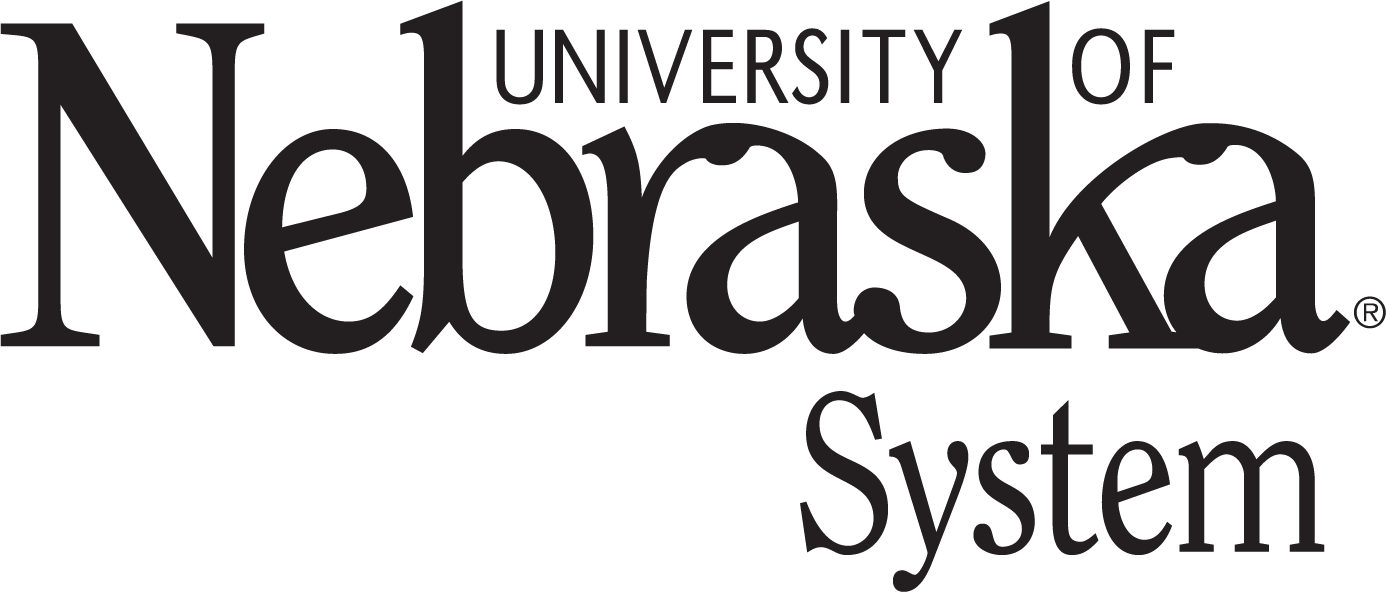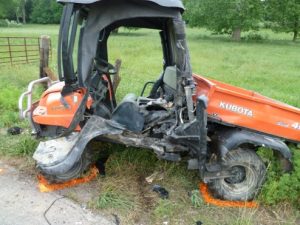1.5 ATV and UTV Incidents
Why Safety Matters
To wrap up this lesson, we will look at accidents that most commonly occur with ATVs and UTVs, as well as how to prevent them. Let’s start with this 2 minute overview video.
Deaths
There are many deaths each year related to the use of ATVs in agriculture and for pleasure.
- As of December 31, 2017, the Consumer Products Safety Commission reported 15,250 ATV-related fatalities occurring between 1982 and 2017.
- There were 295 deaths in 2017, 531 in 2016, and 585 in 2015.
- In 2017, there were an estimated 93,800 ATV-related, emergency department-treated injuries in the United States.
In fact, there are more overturn deaths on ATVs than tractors.
- Males are at higher risk than females.
- Animal production workers have a high rate of injury.
Why are animal production workers at greater risk for ATV injury?
Causes of ATV / UTV Accidents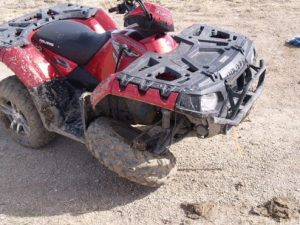
Human factors that lead to ATV and UTV accidents may include health, physical condition, fatigue, poor vision, judgement, balance, speed, medication, alcohol, drugs, among others.
- 92% of ATV-related fatalities involve one or more unsafe behaviors
- No PPE
- Riding on unpaved roads
- Extra passengers
- Riding ATV larger than recommended (children)
- Speeding
- Use of alcohol/drugs
If you are ill or are taking medication that causes drowsiness, do not operate equipment or perform dangerous tasks.
What safety policy does your company have in place regarding the operation of ATVs and UTVs??
Injuries
ATVs and UTVs can be costly both physically and economically. The average cost of health care resulting from an ATV accident resulting from a hospital visit is over $38,000!
The chart below shows that in the US, fractures, abrasions and lacerations were the most common injuries in 2016. Other injuries included spinal cord injury resulting in paralysis.
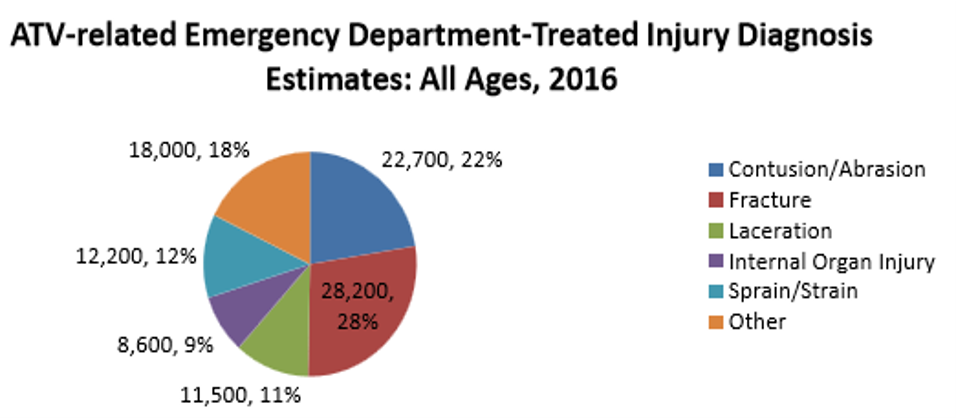
What are potential feedyard hazards that could cause injury when driving an ATV/UTV?
Body Parts Commonly Affected
This next chart summarizes the emergency room visits for ATV-related accidents by body part. We see that head and neck, arms, torsos and legs are the most commonly injured body parts.
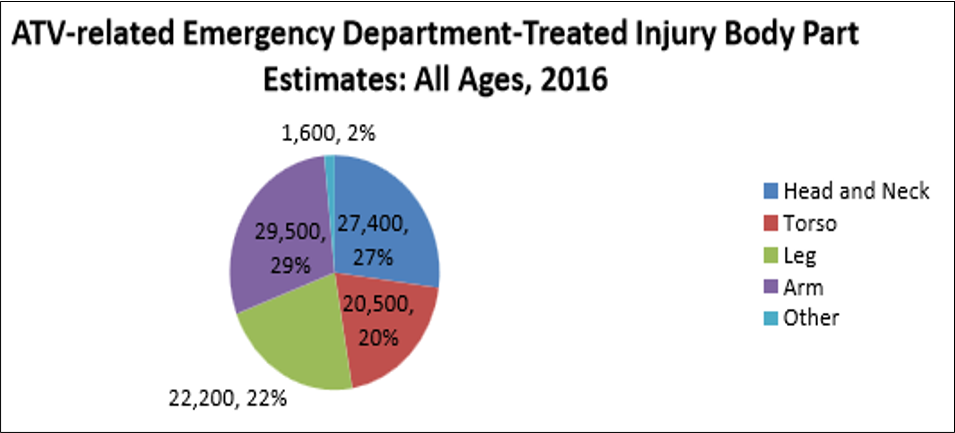
Many of these injuries result in lost time from work.
How could PPE prevent some of these injuries?
Injury Prevention
Many practices and steps can be taken which greatly reduce the risk of accidents and injuries. Some of these injury prevention measures include:
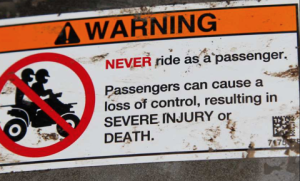 No extra riders on ATVs and for UTVs, the number of riders matches the number of seatbelts.
No extra riders on ATVs and for UTVs, the number of riders matches the number of seatbelts.
- Almost all ATVs are designed for one rider. Additional riders prevent the driver from being able to properly control the ATV.
- Use proper Personal Protective Equipment.
- Take the time to complete all pre-check inspections.
- Know where to ride and the speed limits. Understand where ATV use is allowed and safe on your feedyard. Are ATVs permitted in the yard with the cattle?
- Ensure that new feedyard employees have been trained to ride an ATV prior to use. A good Tips and Practices guide is available at no cost.
Review
Work through these interactive questions to review the important concepts discussed.
Personal Protective Equipment (PPE) is worn to minimize exposure to hazards that can cause injuries. For ATV and UTV use, PPE includes helmets, gloves, goggles, long sleeves, long pants, and over-the-ankle boots to protect riders from injuries.
